
Nadia Elena Comăneci , ( born November 12, 1961) is a Romanian gymnast, winner of three Olympic gold medals at the 1976 Summer Olympics in Montreal and the first female gymnast to be awarded a perfect score of 10 in an Olympic gymnastic event. She also won two gold medals at the 1980 Summer Olympics in Moscow. She is one of the best-known gymnasts in the world.[1][2][3] In 2000 Comăneci was named as one of the athletes of the century by the Laureus World Sports Academy.[4]
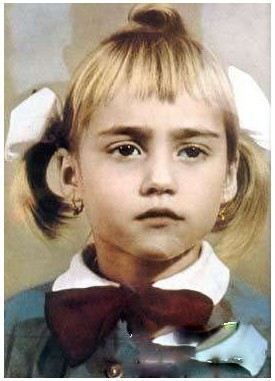

Nadia Comăneci was born in Onești, Romania, as the daughter of Gheorghe and Ștefania-Alexandrina Comăneci.[5][6] Her mother was inspired to call her Nadia by a Russian film she watched while pregnant, whose heroine was called Nadya, the diminutive version of the Russian name Nadezhda, which means "hope". Comăneci also has a brother four years younger than her, named Adrian.[7]
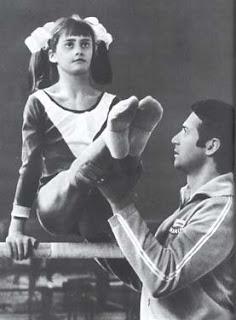
Comăneci began gymnastics in kindergarten with a local team called Flacăra ("The Flame"), with coaches Duncan and Munteanu.[8][9] At age 6 she was chosen to attend Béla Károlyi's experimental gymnastics school after Karolyi spotted her and a friend turning cartwheels in a schoolyard.[5][10][11] Karolyi was looking for gymnasts he could train from a young age and saw the two girls during recess. When recess ended the girls ran inside. Karolyi went around the classrooms trying to find the girls, with no luck. So, he asked, "Who likes gymnastics?" and the girls popped up saying, "Us, us!" Karolyi said one of the girls became a very promising ballerina. The other was Comăneci. She was training with Károlyi by the time she was 7 years old, in 1968. She was one of the first students at the gymnastics school established in Onești by Béla and his wife, Marta. Unlike many of the other students at the Károlyi school, Comăneci was able to commute from home for many years because she lived in the area.[12]

Comăneci came in 13th in her first Romanian National Championships in 1969, at the age of just 8. Béla Károlyi thought this was unlucky and gave her a doll to remind her never to place 13th again[13]—she did not. A year later, in 1970, she began competing as a member of her hometown team and became the youngest gymnast ever to win the Romanian Nationals.[5] In 1971, she participated in her first international competition, a dual junior meet between Romania and Yugoslavia, winning her first all-around title and contributing to the team gold. For the next few years, she competed as a junior in numerous national contests in Romania and additional dual meets with countries such as Hungary, Italy and Poland.[14] At the age of 11, in 1973, she won the all-around gold, as well as the vault and uneven bars titles, at the Junior Friendship Tournament (Druzhba), an important international meet for junior gymnasts.[14][15]

Comăneci's first major international success came at the age of 13, when she nearly swept the 1975 European Championships in Skien, Norway, winning the all-around and gold medals on every event but the floor exercise, in which she placed second. She continued to enjoy success in other meets in 1975, winning the all-around at the "Champions All" competition and placing first in the all-around, vault, beam, and bars at the Romanian National Championships. In the pre-Olympic test event in Montreal, Comăneci won the all-around and the balance beam golds, as well as silvers in the vault, floor, and bars behind accomplished Soviet gymnast Nellie Kim, who would prove to be one of her greatest rivals over the next five years.[14]
In March 1976, Comăneci competed in the inaugural edition of the American Cup at Madison Square Garden in New York. She received rare scores of 10, which signified a perfect routine without any deductions, on vault in both the preliminary and final rounds of competition and won the all-around.[16] Comăneci also received 10s in other meets in 1976, including the Chunichi Cup competition in Japan, where she posted perfect marks on the vault and uneven bars.[17]

The international community took note of Comăneci: she was named the United Press International's "Female Athlete of the Year" for 1975.[18]
Montréal Olympics


Comăneci was the first Romanian gymnast to win the Olympic all-around title. She also holds the record for being the youngest Olympic gymnastics all-around champion ever. With the revised age-eligibility requirements in the sport (gymnasts must now turn 16 in the calendar year to compete in the Olympics; in 1976 gymnasts had to be 14 by the first day of the competition[24]), it is currently not possible to legally break this record.
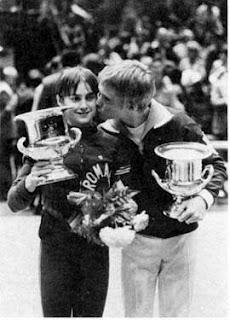
Comăneci's achievements at the Olympics generated a significant amount of media attention. An instrumental piece from the musical score of the 1971 film Bless the Beasts and Children, "Cotton's Dream" (which was also used as the title theme music for the American soap opera The Young and the Restless) became associated with her after cinematographer/feature reporter Robert Riger used it against slow-motion montages of Nadia on the television program ABC's Wide World Of Sports. The song became a top-ten single in the fall of 1976, and the composers, Barry De Vorzon and Perry Botkin, Jr., renamed it "Nadia's Theme" in Comăneci's honour.[25] However, Comăneci never actually performed to "Nadia's Theme." Her floor exercise music was a medley of the songs "Yes Sir, That's My Baby" and "Jump in the Line" arranged for piano.[11] Comăneci's achievements are also pictured in the entrance area of Madison Square Garden in New York City, where she is shown presenting her perfect beam exercise.

Comăneci was the 1976 BBC Sports Personality of the Year in the overseas athletes category[26] and the Associated Press's 1976 "Female Athlete of the Year".[27] She also retained her title as the UPI Female Athlete of the Year.[18] Back home in Romania, Comăneci's success led her to be named a "Hero of Socialist Labor"; she was the youngest Romanian to receive such recognition during the administration of Nicolae Ceaușescu.[8]
1977–1980
Comăneci successfully defended her European all-around title in 1977, but when questions about the scoring were raised, Ceaușescu ordered the Romanian gymnasts to return home. The team followed orders and controversially walked out of the competition during the event finals.[8][28]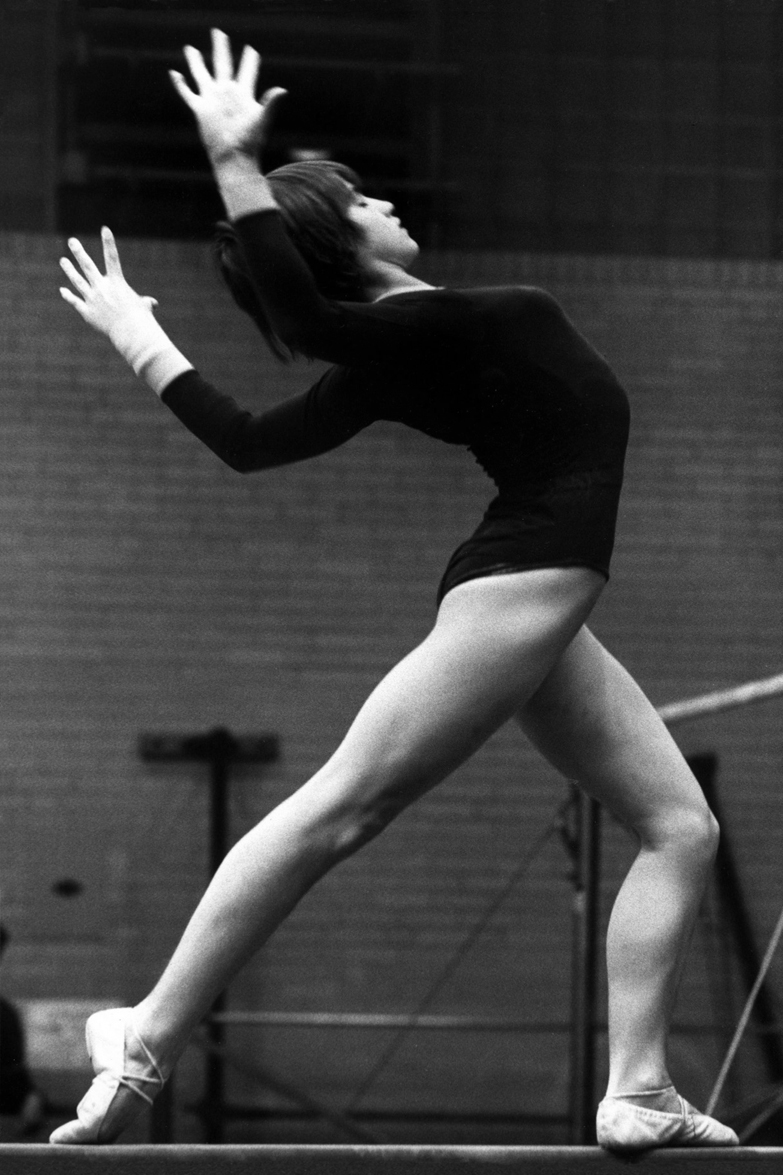
Following the 1977 Europeans, the Romanian Gymnastics Federation removed Comăneci from her longtime coaches, the Károlyis, and sent her to Bucharest to train at the August 23 sports complex. The change was not positive for Comăneci. Grappling with both the stress of her parents' divorce and the new training environment, she was extremely unhappy and her gymnastics and overall fitness suffered.[8][29] Comăneci competed in the 1978 World Championships in Strasbourg looking heavier and out of shape; she was also several inches taller than in Montreal.[21] A fall from the uneven bars resulted in a fourth-place finish in the all-around behind Soviets Elena Mukhina, Nellie Kim, and Natalia Shaposhnikova. Comăneci did win the world title on beam, and a silver on vault.[21]

After the 1978 "Worlds", Comăneci was permitted to return to Deva and to the Károlyis.[30] In 1979, a newly slim and motivated Comăneci won her third consecutive European all-around title, becoming the first gymnast, male or female, to achieve this feat. At the World Championships that December, Comăneci led the field after the compulsory competition but was hospitalized before the optional portion of the team competition for blood poisoning caused by a cut in her wrist from her metal grip buckle. Against doctors' orders, she left the hospital and competed on the beam, where she scored a 9.95. Her performance helped give the Romanians their first team gold medal. After her performance, Comăneci spent several days recovering in All Saints Hospital and underwent a minor surgical procedure for the infected hand, which had developed an abscess.[31][32][33]

Comăneci participated in the 1980 Summer Olympics in Moscow, where she placed second, by a small margin, to Yelena Davydova in the individual all-around event. She successfully defended her Olympic title on the balance beam and tied with Nellie Kim for the gold medal in the floor exercise. There were controversies over the scoring in both the all-around and floor exercise competitions.[21] The Romanian team finished second overall in the team competition.

Comăneci retired from competition in 1981. Her official retirement ceremony took place in Bucharest in 1984 and was attended by the Chairman of the International Olympic Committee.[22]
Defection
In 1981 Comăneci participated in a gymnastics exhibition tour in the United States.[34] During the tour, her coaches, Béla and Marta Károlyi, along with the Romanian team choreographer Géza Pozsár, defected.[35] Upon her return to Romania, Comăneci's actions were strictly monitored. She was granted leave to attend the 1984 Olympics in Los Angeles but was supervised for the entire trip. Aside from that journey, and a few select trips to Moscow and Cuba, Comăneci was forbidden to leave the country for any reason."[22] "Life..." she wrote in her autobiography, "took on a new bleakness".[36]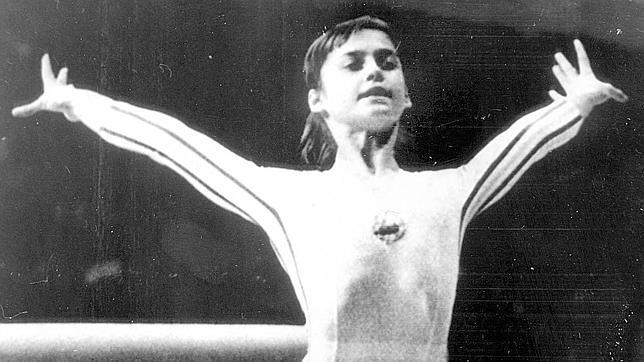
In Romania, between 1984 and 1989, Comăneci was a member of the Romanian Gymnastics Federation and helped coach the Romanian junior gymnasts. In November 1989, a few weeks before the revolution, she defected with a group of other young Romanians. Her overland journey took her through Hungary, Austria, and finally, to the United States.[8][23][37] Her initial arrival in the United States generated some negative press, focusing on her penchant for heavy makeup and flashy clothes, and the fact that her constant companion Constantin Panait (a Romanian exile who arranged her escape from Romania and initially exercised considerable control over her as her self-appointed business manager) was a married father of four.[38]

With the help of her former coach Béla Károlyi and his friend Alexandru Stefu, a Romanian rugby coach, Comăneci was able to make a break with Panait and settle in Montreal.[38] She successfully distanced herself from the image problems of her initial arrival from Romania. Comăneci spent most of her time touring and promoting lines of gymnastics apparel and aerobic equipment. She also dabbled in modeling, appearing in advertisements for wedding dresses and Jockey underwear.[23]
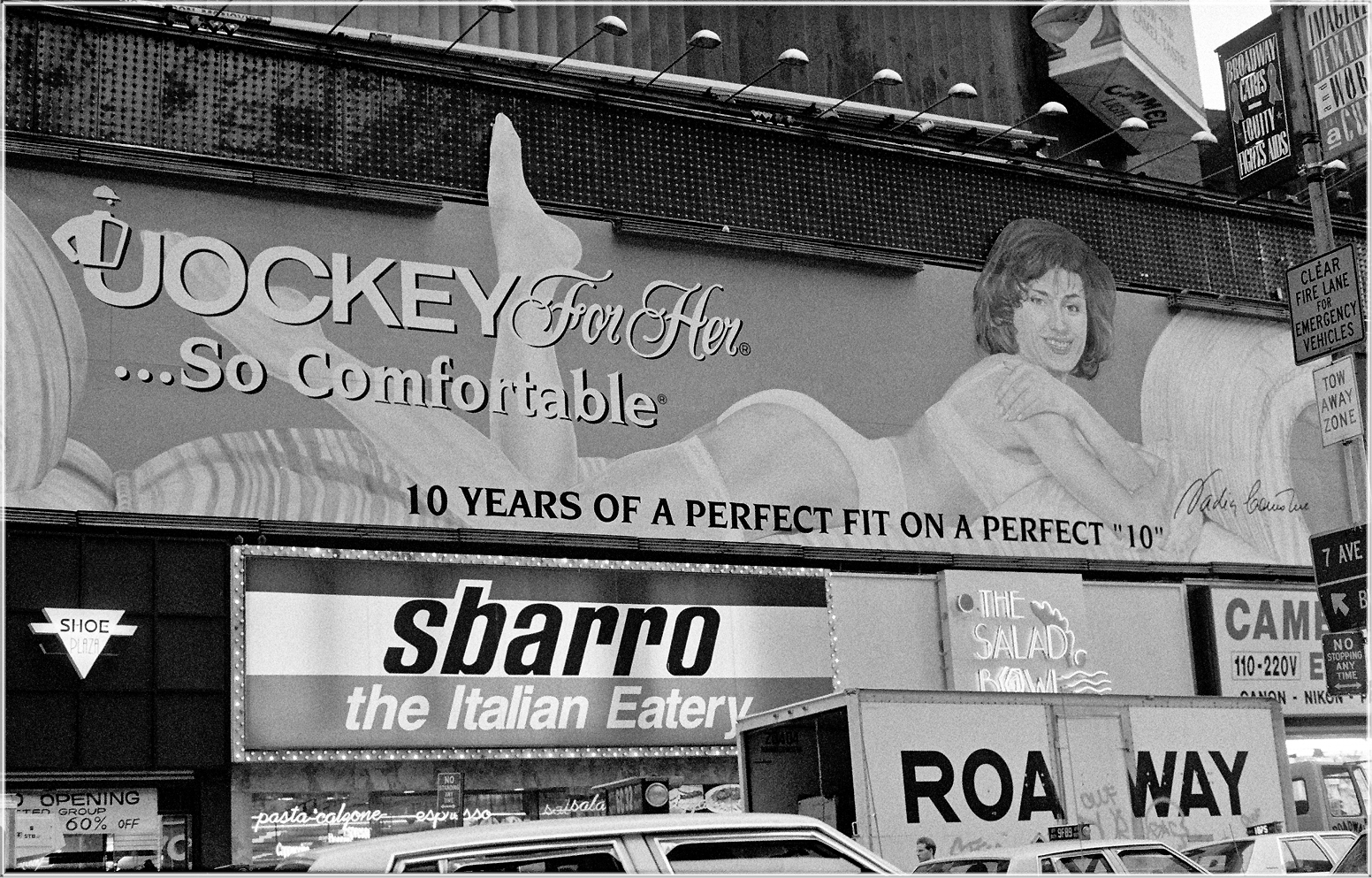
While she was living in Montreal, former American gymnast Bart Conner, whom she had met for the first time in 1976 at the American Cup, contacted her and invited her to live in Oklahoma. They became engaged in 1994. Together with Conner, she returned to Romania for the first time since her defection (and since the fall of Communism and Ceaușescu's death), and the couple were married in Bucharest on April 27, 1996. The ceremony was broadcast live in Romania, and the reception was held in the former presidential palace.[23][39]

On June 29, 2001, Comăneci became a naturalized citizen of the United States. She has also retained her Romanian passport, making her a dual citizen.[8]
Awards
Comăneci received the Olympic Order, the highest award given by the International Olympic Committee, in 1984 and 2004. She is the only person to have received this honour twice, and was also the youngest recipient. She has also been inducted into the International Gymnastics Hall of Fame.[47]Special skills
Comăneci was known for her clean technique, innovative and difficult original skills, and her stoic, cool demeanor in competition.[11][48][49][50]
On the uneven bars, Comăneci performed her own release move, a kip to immediate straddled front salto. The skill is named after her in the women's Code of Points, where it is currently rated an "E" (i.e., high-difficulty) element.[48][49] Also named after her is the "Comăneci dismount", an underswing half turn into a back salto.

On the balance beam, Comăneci was the first gymnast to successfully perform an aerial walkover and an aerial cartwheel-back handspring flight series. She is also credited as being the first gymnast to perform a double-twist dismount.[11][48][49]

Comăneci's skills on the floor exercise included a tucked double back salto and a double twist.[49]
In the early part of her career, Comăneci's competitive vault was a piked Tsukahara (a half-turn pre-flight followed by a piked back salto). Later she vaulted a tucked Cuervo (handspring half turn into tucked back salto).
Taken from: http://en.wikipedia.org/wiki/Nadia_Com%C4%83neci [18.07.2013]


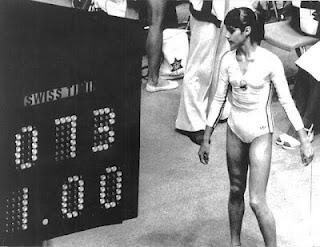
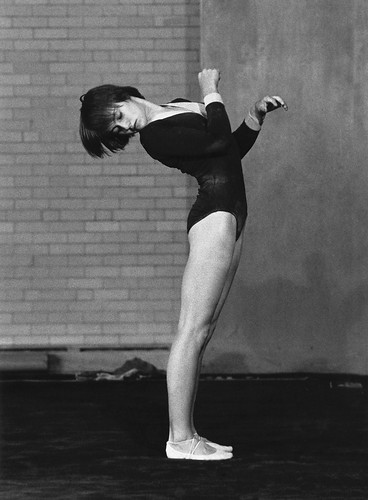

She's wonderful, just wonderful... an angel. What an inspiration. Great gymnast and person as well, she's humble and beautiful. My dad loved her and I remember her so well in the 90s, as a kid I dreamed of being a gymnast and that was a great time for her too, overcoming hardships, adapting in the USA, engaging in gymnastics again, doing ads, getting together with Bart Conner... great times!! Great text and pics you did a good job... congrats :) <3
ReplyDelete